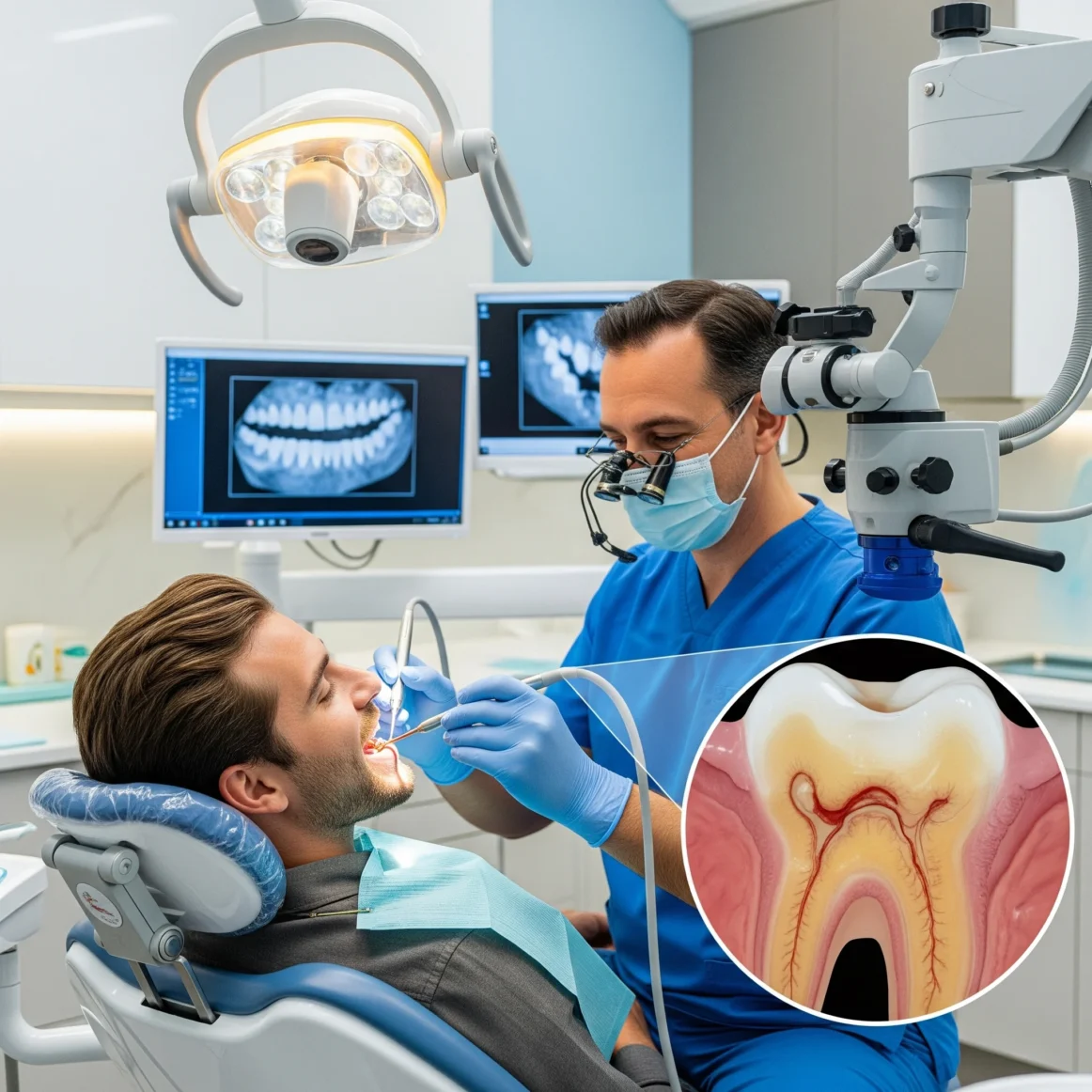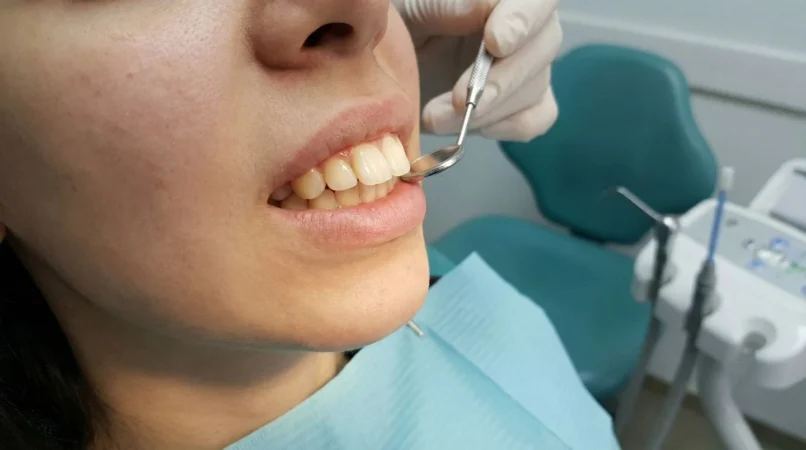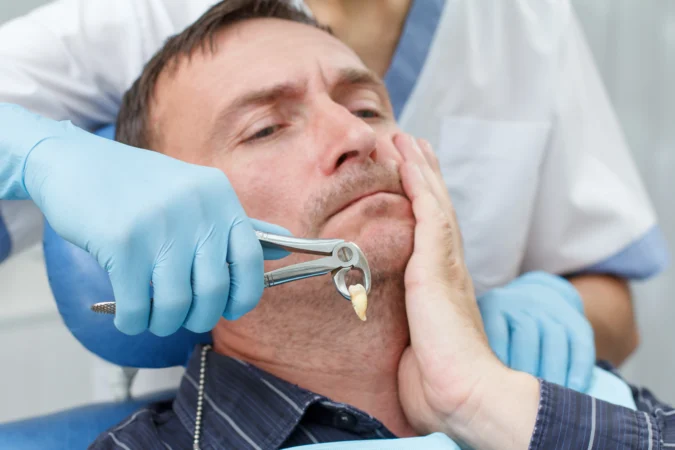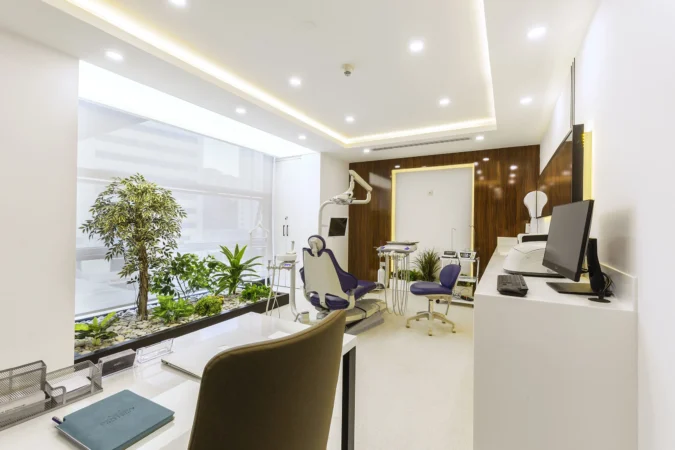Table of content
Tooth pain is awful. It sneaks up, keeps you awake at night, and makes even a sip of cold water feel like torture. If you’ve been there, you know the only thing you want is relief—fast.
And usually, the dentist gives you two main options:
- Save the tooth with a root canal.
- Remove it completely with an extraction.
So, which one’s better? Honestly… it depends. Both treatments solve the pain, but in very different ways. The tricky part is figuring out which one makes the most sense for you.
Let’s walk through both options—what they actually involve, how much they hurt (during and after), what they cost, and what the risks are. By the end, you’ll have a clearer idea of which road you’d rather take.
Root Canal: Fix It, Don’t Lose It
Think of a root canal as a rescue job. Inside your tooth is the pulp—soft tissue packed with nerves and blood vessels. If that pulp gets infected, the pain can be relentless. Instead of tossing the whole tooth, a root canal simply removes the bad part, disinfects the inside, and seals it back up.
Here’s the cool part: the outside of the tooth stays in place. So you still have a natural tooth to chew with, smile with, and keep your bite balanced.
Now, let’s be honest. Everyone’s heard the horror stories: “root canals are the worst.” But the reality today? With numbing and modern tools, most patients say it feels about as stressful as getting a filling. Sure, you might feel sore for a day or two, but it’s usually mild. Think muscle ache after a workout—not stabbing pain.
Bottom line: a root canal saves your tooth instead of throwing it away.
Tooth Extraction: A Clean Break
Sometimes a tooth is just too far gone. Cracked below the gumline, rotted beyond saving, or causing infections again and again. In those cases, pulling it may be the only way forward.
An extraction can be simple or surgical:
- Simple extraction: dentist numbs you, wiggles the tooth loose, and it’s out in minutes.
- Surgical extraction: usually for wisdom teeth or impacted molars—done by an oral surgeon with more careful steps.
Once the tooth is gone, a blood clot forms to start healing. If that clot gets disturbed (say you smoke or drink through a straw), you risk “dry socket,” which is basically exposed bone. And yes, it hurts.
And let’s not forget: once the tooth is gone, it leaves a gap. That gap can cause shifting teeth, bone shrinkage, and awkward chewing. Which is why dentists often recommend a replacement like an implant or bridge.
Pain & Recovery: Which Hurts More?
This is the question almost everyone asks. Nobody wants to choose the “painful option.”
Here’s the breakdown:
- Root canal: Completely numb during the procedure. Afterward, most people feel mild soreness—like you chewed gum for hours. You pop a painkiller, avoid chewing on it for a day, and you’re usually fine. Some people even go back to work the same day.
- Extraction: Again, numb during the pull. But after? It’s heavier. Swelling, bleeding, discomfort for a few days. Eating is tricky. Back molars, especially, take longer. I’ve had patients compare it to spraining an ankle: you’re mobile, but every move reminds you something’s not right. And if you get dry socket… that’s next-level painful.
Cost: Cheap Now or Smart Later?
At first glance, pulling a tooth looks cheaper. It’s quick and costs less upfront. But here’s the catch: if you leave the gap, your bite can shift, your jawbone weakens, and chewing gets harder. If you replace it with an implant or bridge, the price climbs fast.
A root canal? More expensive upfront, but you keep your tooth. That usually means fewer long-term problems, fewer extra treatments, and fewer costs down the road.
Think of it like fixing a cracked phone screen instead of buying a new phone.
Risks: What Could Go Wrong?
Every treatment has a “but.”
- Root canal risks: Rarely, some infection can remain if the canals are very tricky to clean. In those cases, retreatment or extraction may be needed later.
- Extraction risks: Besides swelling and bleeding, dry socket is the big one. Long term, not replacing the tooth leads to bite problems and bone loss.
Neither option is “risky” when done by a skilled dentist, but knowing the possibilities helps you decide.
Why Dentists Prefer Saving Teeth
Ask any dentist: if the tooth can be saved, it’s worth trying. Natural teeth are stronger than any replacement. They keep your bite aligned, your jawbone healthy, and your smile natural.
Extraction is sometimes necessary, but it’s usually the last resort. A root canal? It’s a second chance. And with good oral care, it can last a lifetime.
Medical Tourism: Why So Many Patients Choose DentSpa in Türkiye
Every year, more than 50,000 patients from abroad come to Istanbul for dental care. Why? Because they get the same high-quality treatment they’d expect in Europe or the US—but at a much lower cost.
At DentSpa, patients find:
- Dentists trained to handle both simple and complex cases.
- Digital technology that makes treatments faster and more precise.
- A team that speaks your language—English, French, German, Arabic, Russian, Turkish.
- Affordable, all-inclusive packages.
- Recognition as one of Europe’s top dental clinics.
And let’s be honest: getting your treatment done in Istanbul, then walking out to enjoy the city, beats sitting in a waiting room back home.
Final Takeaway
If the tooth can be saved, the root canal is usually your best bet. Less recovery time, fewer complications, and you keep your natural smile. Extraction is sometimes necessary, but it often leads to more steps afterward.
Still unsure? Talk it through with your dentist. If you’re considering traveling for care, DentSpa in Türkiye is trusted by thousands of international patients every year. The combination of expert dentists, advanced technology, and affordable packages makes it a smart choice.
Because at the end of the day, it’s not just about fixing one tooth—it’s about protecting your whole smile for the future.

















 70%
70% 

